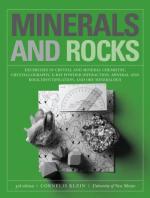|
This section contains 1,382 words (approx. 5 pages at 300 words per page) |

|
In the early years of science, crystals were considered a strange union of the animal and mineral kingdoms, growing into predetermined shapes like living things but seemingly without life. Many mineralogists hypothesized that their growth was the result of astrological forces. It was not until Robert Boyle and Robert Hooke began experimenting with microscopes that the true nature of crystals began to be understood. During the course of the last three centuries an entire field of study-- crystallography--has emerged to continue the understanding of crystals.
All solid matter is either amorphous (without definite shape) or crystalline (from the Greek word for clear ice). Crystals are defined by a regular, well-ordered molecular structure called a lattice, consisting of stacked planes of molecules. Because the molecules of the crystal "fit together" so well, the crystal is typically very strong.
There are many shapes in which crystals...
|
This section contains 1,382 words (approx. 5 pages at 300 words per page) |

|


